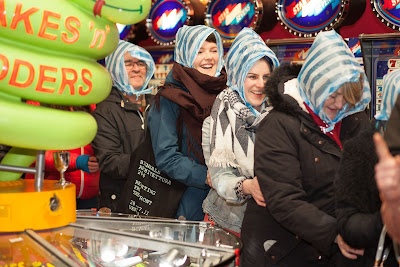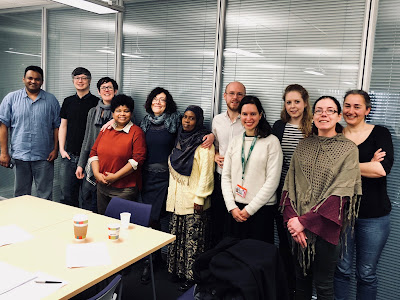Andrew Moxey, who is working with CRE and research partners on the ESRC funded project Brexit: How might UK agriculture survive or thrive?reflects on the recent Defra/AES One-Day Conference “Agricultural Trade & Brexit” .
As with last year’s one-day conference, Defra’s Minister for Agriculture George Eustice made an appearance. And, as with last year, he championed the opportunities offered by Brexit and expressed confidence in the future international competitiveness of UK agriculture. In particular, he was positive that UK sheep producers could compete with those of New Zealand. Given the UK government’s apparent reluctance to issue analysis of economic impacts, and indeed to dismiss any that does appear, I am curious as to the basis for his confidence. I for one do not share it. Moreover, talking to other delegates over lunch, it is apparent that neither do many of the other agricultural economists who were present – whether they be academics, civil servants (hush!) or industry members. Yes, some form of agriculture may survive, but the pressures for rapid structural change will be immense and it is not clear that the consequences have been thought-through.
For example, the environment did not feature in any of the day’s presentations. Given the emphasis on ecosystem services in Defra’s own current consultation on future policy, this seems something of an omission. What are the implications of Brexit and different domestic support arrangements for agricultural land abandonment, chemical usage and carbon emissions? How might they vary geographically? Equally, what are the implications for social cohesion and community viability in remoter rural areas where agriculture is relatively more important economically? What support measures might be needed to help structural adjustment processes? As one speaker noted in passing “one person’s efficiency is another man’s redundancy” (I’m reminded of a Mitchell & Webb comedy sketch about flint knappers meeting makers of bronze arrow-heads).
The modelling work presented (including two speakers from our own ESRC project) in the morning was well-received, but even in terms of farm income and production levels it has yet to get to the nub of likely structural adjustments. Models at the economy and sector-levels may have implicit or explicit elasticities describing supply-responses, including how factor markets will adjust, but it is not clear how well these describe actual relationships on the ground. For example, will land rental values fall to lower costs and encourage farm amalgamations? How might tenancy arrangements and the tax treatment of land affect such processes? Equally, how well do average coefficients represent responsiveness of highly heterogenous farms? Despite considerable effort being expended on collecting farm data, I find myself reflecting on how little we seem to know. Goodness knows how analysts working in other sectors are faring.
The afternoon presentations and plenary session sessions spanned a wider range of topics, and I gained some useful insights. For example, the implications of Brexit for cross-border trade between Ireland and Northern Ireland, but also Great Britain, could be significant for all parties due to the sheer volume and complexity of trade flows. Moreover, reductions in access to the UK market could affect the EU27 market as Irish producers seek alternative outlets. Similarly, some developing countries are exposed to potential trade disruption if current preferential arrangements are eroded. It is clear that the sheer number and variety of existing arrangements could pose a sequencing problem for bilateral renegotiations, and that potentially this could stimulate a revisiting of multilateral talks to revise the Agreement on Agriculture (although I won’t hold my breath).
Non-tariff measures (NTMs, previously NTBs!) are common in agricultural trade, but are difficult to measure and to incorporate into modelling analysis. This partly reflects their complexity (e.g. some can actually be trade-enhancing) but also a lack of data. However, preliminary assessments suggest that they can have a greater impact than tariffs and continue to distort trade even in the absence of tariffs. This poses a challenge to modelling analysis. Apparently, the UK food and drink sector is probably more exposed than agriculture is to such issues, so there’s yet another avenue for further research! As an aside, I was depressed to have my doubts about the feasibility of resolving technical issues around myriad standards and bureaucratic procedures by March 2019 confirmed by several speakers and discussants: do UK Ministers genuinely believe that solutions can be found more quickly?
Overall an informative and stimulating day, confirming that there is still much to do and to be learnt: the Chairman wryly noted the resurgence of interest in agricultural economics and even asked the Minister if he would reinstate the old MAFF scholarships for post-graduate work, but got no commitment (as to be expected in these continued times of austerity 😉).


